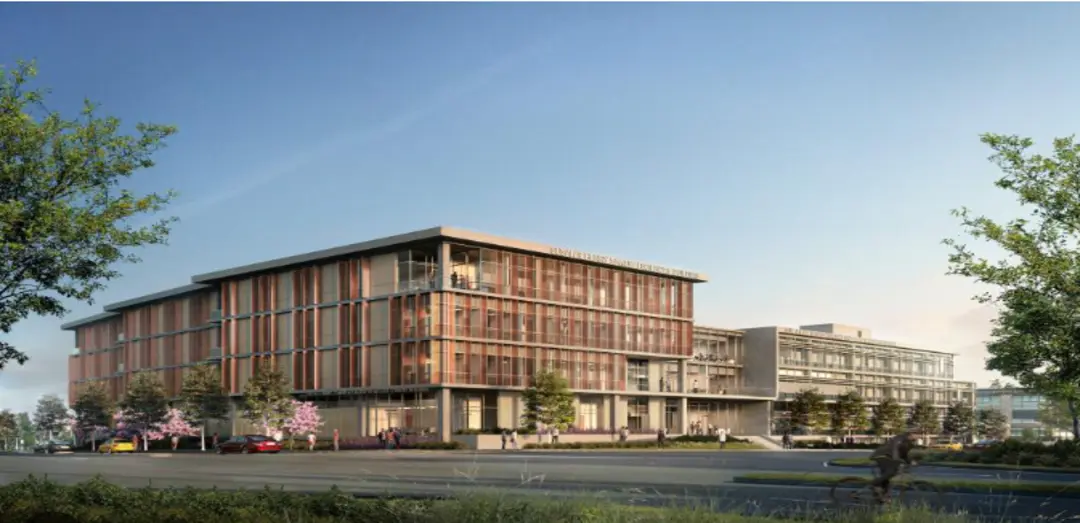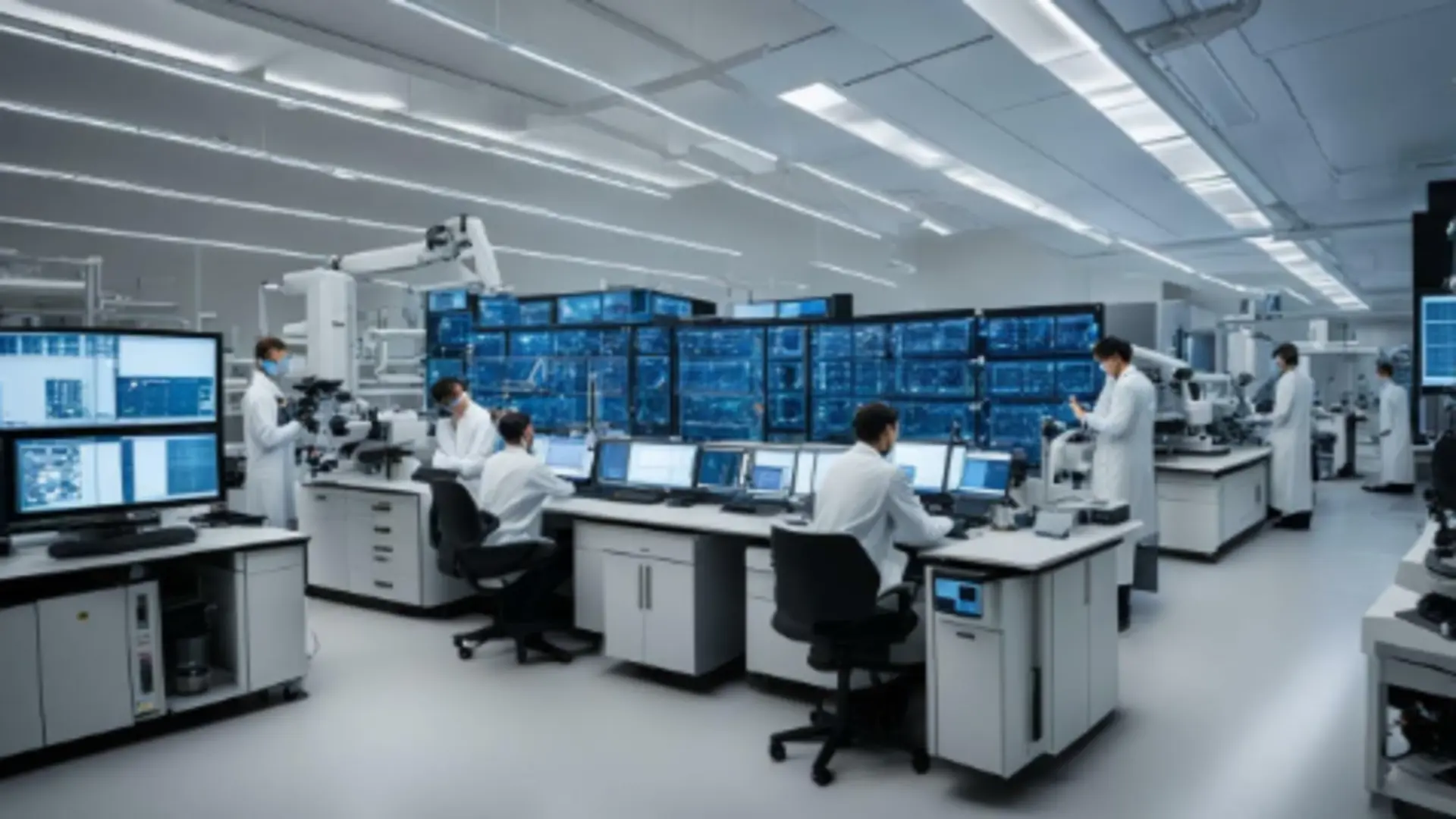The University of California, Irvine (UC Irvine) is a beacon of innovation and academic excellence, renowned for its pioneering research facilities. Nestled in the heart of Southern California, UC Irvine’s research environment is a testament to its commitment to advancing knowledge across various disciplines. This article provides an in-depth exploration of the university’s state-of-the-art research facilities, highlighting the groundbreaking work being done and the impact these endeavors have on the global stage.
A Brief Overview of UC Irvine
Founded in 1965, UC Irvine has rapidly ascended the ranks of prestigious institutions, establishing itself as a leading public research university. With a diverse student body and a faculty comprising some of the world’s foremost experts, UC Irvine is dedicated to fostering an environment of inquiry, innovation, and impact. The university’s research facilities are integral to this mission, providing the infrastructure and resources necessary for cutting-edge research.
The Samueli School of Engineering
Engineering and Computer Science Research Facilities
The Samueli School of Engineering at UC Irvine is home to several research centers and institutes that are at the forefront of technological innovation. The Institute for Design and Manufacturing Innovation (IDMI) exemplifies this commitment. IDMI focuses on advancing design, manufacturing, and information technologies to address complex engineering challenges. The institute’s facilities include advanced 3D printing labs, robotics and automation systems, and computational design environments.
Another notable facility within the Samueli School is the Advanced Power and Energy Program (APEP). APEP is dedicated to developing sustainable energy solutions, with research spanning fuel cells, renewable energy integration, and energy storage technologies. The program’s laboratories are equipped with state-of-the-art instrumentation for energy systems testing and optimization, making it a critical hub for energy research.
The Edwards Lifesciences Center for Advanced Cardiovascular Technology
One of the crown jewels of UC Irvine’s engineering research infrastructure is the Edwards Lifesciences Center for Advanced Cardiovascular Technology. This center focuses on pioneering research in cardiovascular health, combining engineering principles with medical science to develop innovative treatments and technologies. The center’s facilities include advanced imaging labs, biocompatibility testing environments, and computational modeling tools, all of which are essential for developing next-generation cardiovascular devices and therapies.
The School of Physical Sciences
Quantum Science and Technology
UC Irvine’s School of Physical Sciences is renowned for its contributions to fundamental and applied research in physics, chemistry, mathematics, and earth system science. One of the most exciting areas of research within the school is quantum science and technology. The university’s quantum science facilities are equipped with cutting-edge instrumentation for exploring quantum phenomena, including quantum computing, quantum communication, and quantum materials.
The Center for Quantum Research and Technology (CQRT) is a focal point for this work. CQRT’s laboratories feature advanced quantum computing platforms, ultra-low temperature facilities, and sophisticated measurement and control systems. Researchers at CQRT are pushing the boundaries of what is possible with quantum technologies, with implications for computing, cryptography, and materials science.
Atmospheric and Environmental Research
The School of Physical Sciences also houses world-class facilities for atmospheric and environmental research. The AirUCI Institute is dedicated to understanding the impact of human activities on air quality and climate. The institute’s laboratories are equipped with advanced atmospheric monitoring and analysis tools, enabling researchers to study pollutants, greenhouse gases, and other atmospheric constituents with unprecedented precision.
In addition to AirUCI, the school’s Environmental Physics Laboratory (EPL) focuses on studying the physical processes that govern the Earth’s environment. EPL’s facilities include specialized equipment for measuring atmospheric radiation, cloud properties, and other critical parameters. This research is essential for improving climate models and developing strategies to mitigate the effects of climate change.
The School of Biological Sciences
Neuroscience and Neurobiology
The School of Biological Sciences at UC Irvine is a leader in research on the brain and nervous system. The Center for the Neurobiology of Learning and Memory (CNLM) is a prime example of the school’s commitment to understanding the complexities of the brain. CNLM’s facilities include advanced imaging technologies such as functional magnetic resonance imaging (fMRI) and two-photon microscopy, which allow researchers to observe brain activity and neural processes in real-time.
Additionally, the UCI Brain Initiative is a multidisciplinary effort to advance our understanding of the brain and develop treatments for neurological disorders. The initiative’s facilities include state-of-the-art laboratories for electrophysiology, optogenetics, and neurogenetics. These resources enable researchers to investigate the underlying mechanisms of brain function and develop innovative therapies for conditions such as Alzheimer’s disease, Parkinson’s disease, and epilepsy.
Ecology and Evolutionary Biology
The school’s research in ecology and evolutionary biology is equally impressive. The Center for Environmental Biology (CEB) focuses on understanding
the complex interactions between organisms and their environments. CEB’s facilities include field research stations, greenhouse complexes, and molecular biology labs, providing researchers with the tools to study ecosystems, biodiversity, and the impacts of environmental change. The center’s work is crucial for informing conservation strategies and sustainable management practices.
The Ecology and Evolutionary Biology department also benefits from the Natural Reserve System (NRS), a network of protected natural areas throughout California. These reserves serve as outdoor laboratories where researchers can conduct long-term ecological studies and monitor environmental changes. The NRS provides invaluable data on species interactions, climate impacts, and habitat restoration, contributing to our understanding of ecological dynamics and biodiversity conservation.
Visit Other Locations :
. Explore the iconic Pirates of Caribbean Ride at Disney with thrilling adventures and immersive storytelling.
. Discover the ultimate guide to the Best Six Flags attractions and experiences.
The School of Medicine
Cancer Research and Treatment
UC Irvine’s School of Medicine is at the forefront of biomedical research, with a strong emphasis on cancer research and treatment. The Chao Family Comprehensive Cancer Center (CFCCC) is one of only 51 National Cancer Institute (NCI)-designated comprehensive cancer centers in the United States. The center’s facilities include cutting-edge laboratories for molecular biology, genomics, and proteomics, as well as clinical research units that facilitate the translation of laboratory discoveries into new treatments.
CFCCC’s researchers are engaged in pioneering work on cancer immunotherapy, targeted therapies, and early detection methods. The center’s advanced imaging facilities, such as positron emission tomography (PET) and magnetic resonance imaging (MRI), enable precise diagnosis and monitoring of cancer progression. The collaborative environment at CFCCC fosters interdisciplinary research, bringing together experts from various fields to tackle the complexities of cancer.
Stem Cell Research
The Sue & Bill Gross Stem Cell Research Center is another cornerstone of UC Irvine’s medical research infrastructure. The center is dedicated to advancing the understanding and application of stem cell biology for regenerative medicine. Its state-of-the-art facilities include cell culture labs, tissue engineering suites, and advanced imaging systems, all of which support cutting-edge research on stem cell differentiation, tissue repair, and disease modeling.
Researchers at the Stem Cell Research Center are exploring innovative treatments for a range of conditions, including spinal cord injuries, neurodegenerative diseases, and cardiovascular disorders. The center’s translational research efforts aim to bring stem cell therapies from the laboratory to the clinic, offering new hope for patients with currently untreatable conditions.
The Henry Samueli School of Health Sciences
Integrative Health and Wellness
The Susan Samueli Integrative Health Institute (SSIHI) within the Henry Samueli School of Health Sciences is dedicated to promoting holistic approaches to health and wellness. SSIHI’s facilities include clinical research labs, behavioral health suites, and complementary medicine centers, providing a comprehensive environment for studying integrative health practices.
SSIHI’s research spans a wide range of topics, from the efficacy of herbal supplements and acupuncture to the psychological benefits of mindfulness and meditation. The institute’s collaborative approach integrates conventional medical research with complementary therapies, aiming to improve overall health outcomes and patient well-being.

Public Health Research
The Program in Public Health at UC Irvine is another key component of the Henry Samueli School of Health Sciences. The program’s research facilities include epidemiology labs, biostatistics centers, and community health outreach units. These resources support investigations into public health challenges such as infectious diseases, environmental health hazards, and health disparities.
The program’s interdisciplinary research efforts are geared towards developing evidence-based interventions and policies to improve population health. The Community Engagement and Research Program (CERP) within the Program in Public Health fosters partnerships with local communities, ensuring that research findings are translated into practical solutions that benefit public health at the grassroots level.
The Donald Bren School of Information and Computer Sciences
Artificial Intelligence and Machine Learning
The Donald Bren School of Information and Computer Sciences is a leader in research on artificial intelligence (AI) and machine learning (ML). The Center for Machine Learning and Intelligent Systems (CMLIS) is at the heart of these efforts, housing state-of-the-art computing facilities and data analytics platforms. CMLIS researchers are working on a wide array of projects, from developing advanced algorithms for data mining and predictive modeling to creating intelligent systems for robotics and autonomous vehicles.
The Bren School’s AI and ML research is supported by extensive computational resources, including high-performance computing clusters and specialized hardware for deep learning. These facilities enable researchers to tackle large-scale data challenges and develop innovative solutions with real-world applications in fields such as healthcare, finance, and transportation.
Cybersecurity and Privacy
Cybersecurity is another critical area of research within the Bren School. The Secure Computing and Networking Center (SCNC) focuses on developing technologies and strategies to protect information systems from cyber threats. SCNC’s facilities include advanced cybersecurity labs equipped with the latest tools for network monitoring, intrusion detection, and cryptographic analysis.
Researchers at SCNC are addressing a wide range of cybersecurity challenges, from securing critical infrastructure to protecting individual privacy in the digital age. The center’s work is essential for safeguarding sensitive information and ensuring the integrity and resilience of modern information systems.
More information:-
. Explore Shanghai Disney Resort’s magic! Discover attractions, dining, and entertainment in China’s premier Disney destination.
. Discover benefits & pricing of Disneyland Paris Annual Passes! Enjoy year-round magic with exclusive perks.
The School of Humanities
Digital Humanities
The School of Humanities at UC Irvine is embracing the digital age with innovative research in the field of digital humanities. The Digital Humanities Exchange (DHX) provides a collaborative space where scholars from different disciplines can explore the intersection of technology and the humanities. DHX’s facilities include digital media labs, virtual reality environments, and high-performance computing resources.
Researchers in digital humanities are leveraging these tools to analyze historical texts, visualize cultural data, and create immersive virtual experiences. The interdisciplinary nature of DHX fosters collaboration between historians, literary scholars, computer scientists, and artists, leading to new insights and creative approaches to humanities research.
Language and Culture Studies
The School of Humanities also houses world-class facilities for language and culture studies. The Language Science Center (LSC) is dedicated to advancing our understanding of human language through interdisciplinary research. LSC’s facilities include linguistic labs, soundproof booths for phonetic analysis, and advanced software for language processing and analysis.
The center’s research encompasses a wide range of topics, from the cognitive processes underlying language acquisition to the sociocultural factors that influence language use. By combining empirical research with theoretical insights, LSC is contributing to our knowledge of how language shapes human experience and communication.
The School of Social Ecology
Environmental Psychology
The School of Social Ecology at UC Irvine is renowned for its research on the interplay between human behavior and the environment. The Environmental Psychology Laboratory (EPL) is a key facility within the school, equipped with advanced tools for studying human interactions with natural and built environments. EPL’s research focuses on understanding how environmental factors influence behavior, well-being, and decision-making.
The laboratory’s interdisciplinary approach integrates perspectives from psychology, urban planning, and environmental science. This research is essential for designing sustainable communities, promoting environmental stewardship, and improving public health outcomes.
Criminology and Law
The School of Social Ecology also excels in criminology and law research. The Center for Evidence-Based Corrections (CEBC) conducts pioneering work on criminal justice policies and practices. CEBC’s facilities include secure data centers, advanced statistical analysis software, and simulation environments for evaluating correctional programs and interventions.
Researchers at CEBC are committed to improving the effectiveness and fairness of the criminal justice system. Their work encompasses a wide range of issues, from reducing recidivism and improving rehabilitation programs to addressing systemic biases and promoting restorative justice practices.
Interdisciplinary Research Initiatives
The Beall Applied Innovation
One of UC Irvine’s most dynamic research environments is the Beall Applied Innovation (BAI) center. BAI serves as a bridge between academia and industry, fostering entrepreneurship and technology commercialization. The center’s facilities include incubator labs, prototype development workshops, and collaborative workspaces for startups and innovators.
BAI supports a diverse range of research initiatives, from biomedical engineering and materials science to software development and environmental technologies. By providing resources and mentorship, BAI helps researchers translate their discoveries into marketable products and services, driving economic growth and societal impact.
The Center for Complex Biological Systems
The Center for Complex Biological Systems (CCBS) is another example of UC Irvine’s commitment to interdisciplinary research. CCBS focuses on understanding the complex interactions within biological systems, from molecular networks to ecosystems. The center’s facilities include advanced microscopy labs, bioinformatics platforms, and computational modeling tools.
CCBS’s research integrates principles from biology, engineering, mathematics, and computer science to address fundamental questions about life and health. This interdisciplinary approach is essential for tackling complex biomedical challenges and developing innovative solutions for healthcare and environmental sustainability.
The Future of Research at UC Irvine
UC Irvine’s cutting-edge research facilities are continually evolving to meet the demands of a rapidly changing world. The university is committed to expanding its infrastructure, fostering interdisciplinary collaboration, and promoting innovation across all fields of study. Future plans include the development of new research centers, the acquisition of advanced instrumentation, and the expansion of partnerships with industry and government agencies.
The impact of UC Irvine’s research extends far beyond the campus, contributing to scientific knowledge, technological advancement, and societal well-being on a global scale. By investing in state-of-the-art facilities and supporting a vibrant research community, UC Irvine is poised to remain at the forefront of innovation and discovery for years to come.
In conclusion, UC Irvine’s research facilities are a cornerstone of its mission to advance knowledge and address the world’s most pressing challenges. From engineering and physical sciences to medicine, humanities, and social ecology, the university’s state-of-the-art infrastructure supports groundbreaking research across a wide range of disciplines. As UC Irvine continues to invest in its research capabilities, it is well-positioned to make significant contributions to science, technology, and society, shaping a brighter future for all.


